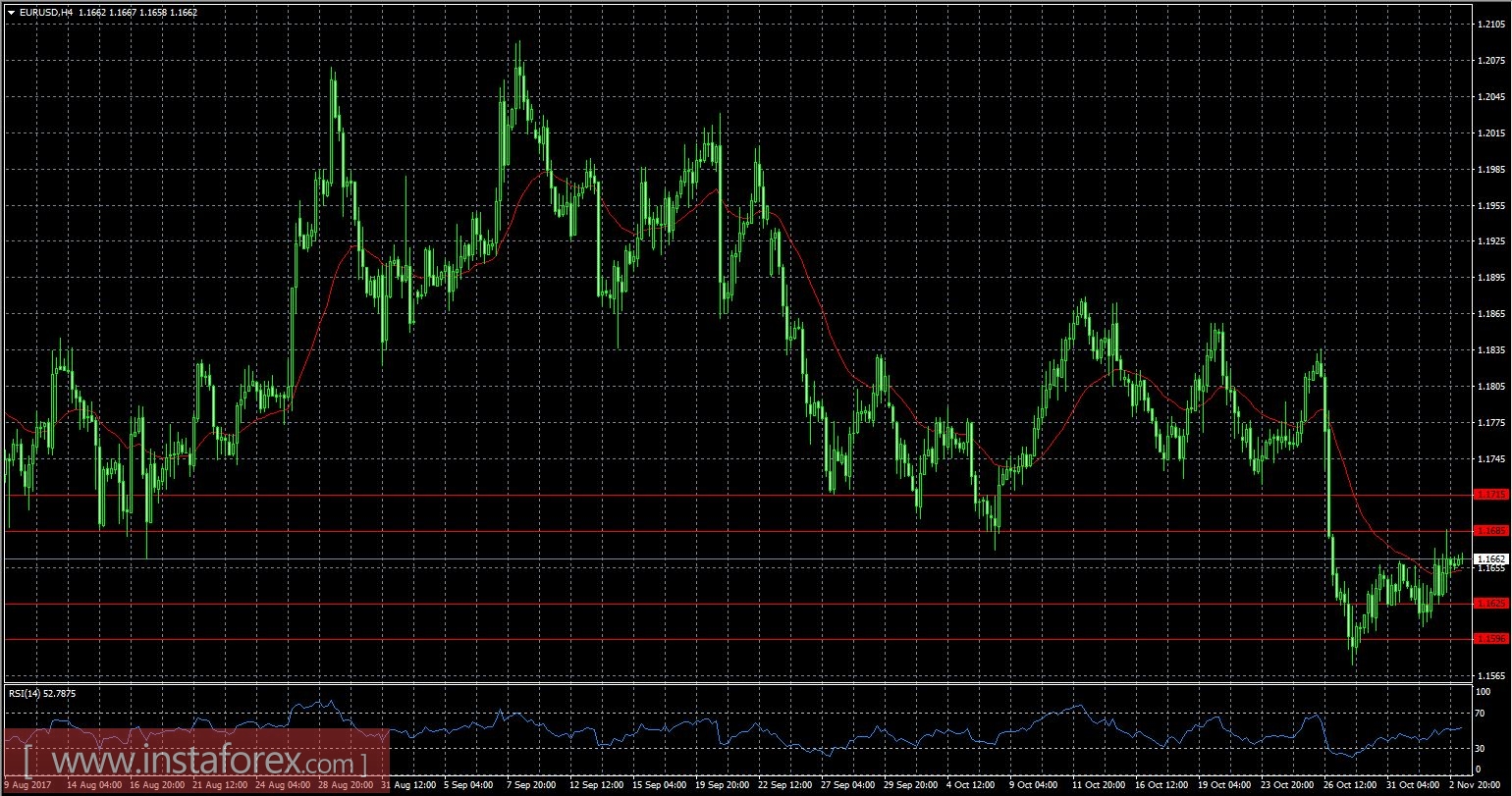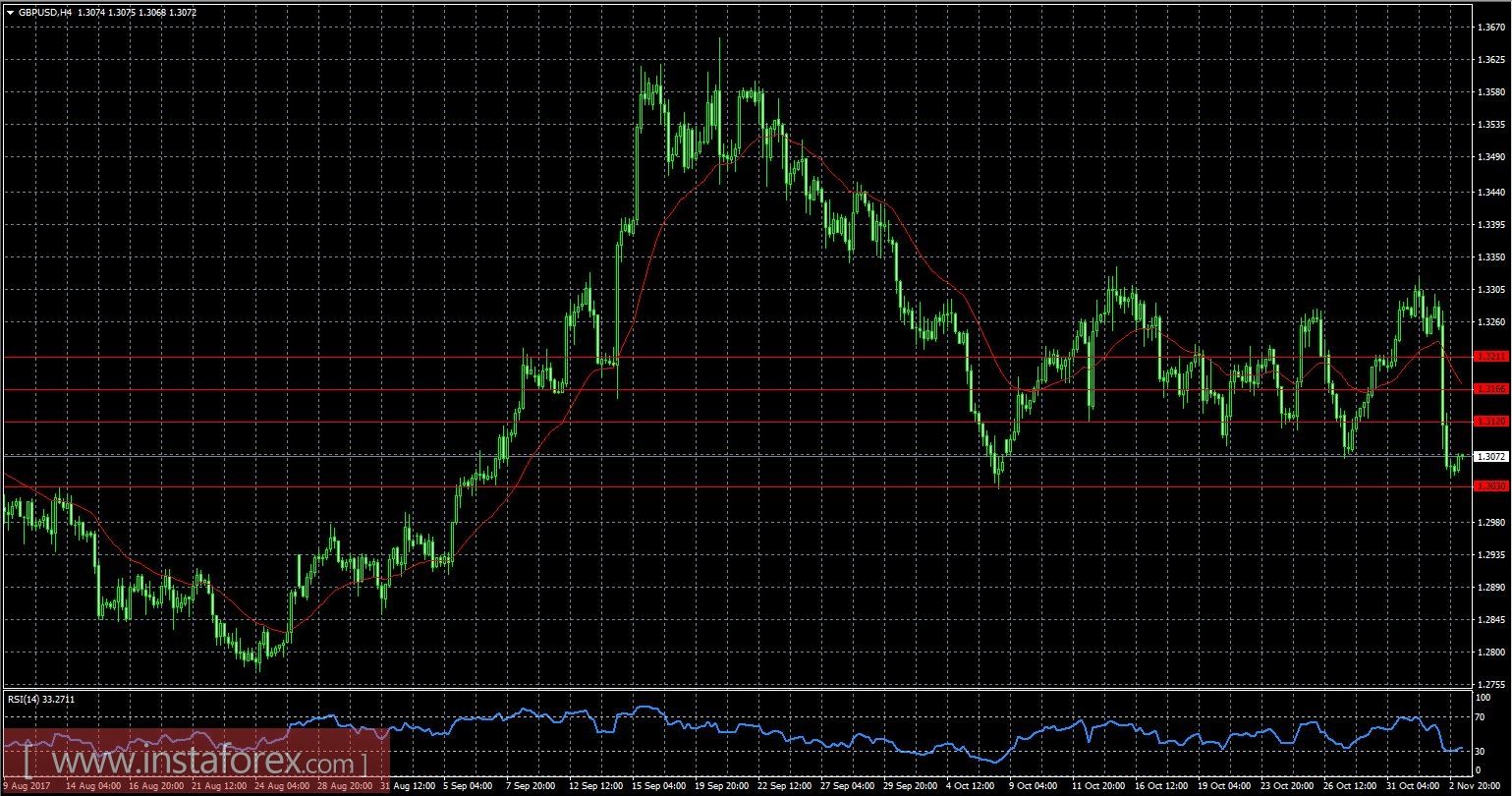It seems that the central banks have a new trend to present surprises to the market. The Bank of England, following the ECB, surprised everyone unpleasantly. As expected, the refinancing rate was raised from 0.25% to 0.50% causing the pound to collapse instead of growing. Market participants strongly disliked Mark Carney's statement that there are plans to double the refinancing rate but not for a year, as promised earlier, but until 2020. It can be stated that the period of super-soft monetary policy in Europe is smoothly turning into a whole era. After all, the Bank of England raised the refinancing rate for the first time in ten years.
The euro reacted to the decision of the Bank of England with moderate growth, which once again proves that after Brexit, the pound and the euro are no longer connected with each other. In addition, the index of business activity for the manufacturing sector in Europe rose from 58.1 to 58.5. Truly, this is somewhat lower than the preliminary estimate showed. It is worth noting that in the UK, the index of business activity in the construction sector increased from 48.1 to 50.8. Apparently, a cheaper pound makes investments in British real estate more attractive.
The euro did not react to the decision of Donald Trump to change the head of the Fed. Janet Yellen will be the first head of the Fed not reassigned for a second term. Her term expires in February next year. The new head of the Fed will be Jerome Powell, who is now a member of the board of governors of the Fed. In general, Mr. Powell has the same views as Janet Yellen, so nothing changes in the Fed policy. The only thing from the new head of the Fed is expecting a gradual easing of supervision over the banking system. The lack of a reaction of the markets to the change of the head of the Fed can be linked both to the fact that there will be no changes in monetary policy as well as the fact that Mr. Powell still has to be approved by the Senate.
Today, the market is waiting for the publication of a report on the state of the labor market in the United States. In general, the forecasts are quite optimistic. The unemployment rate should remain unchanged and the average hourly wage can grow by 0.3%. However, the most important thing is that out of the agriculture sector, 312 thousand new jobs should have been created. This is an incredibly large number, so the dollar will respond with strengthening.
The EUR/USD is likely to fall to 1.1600.























